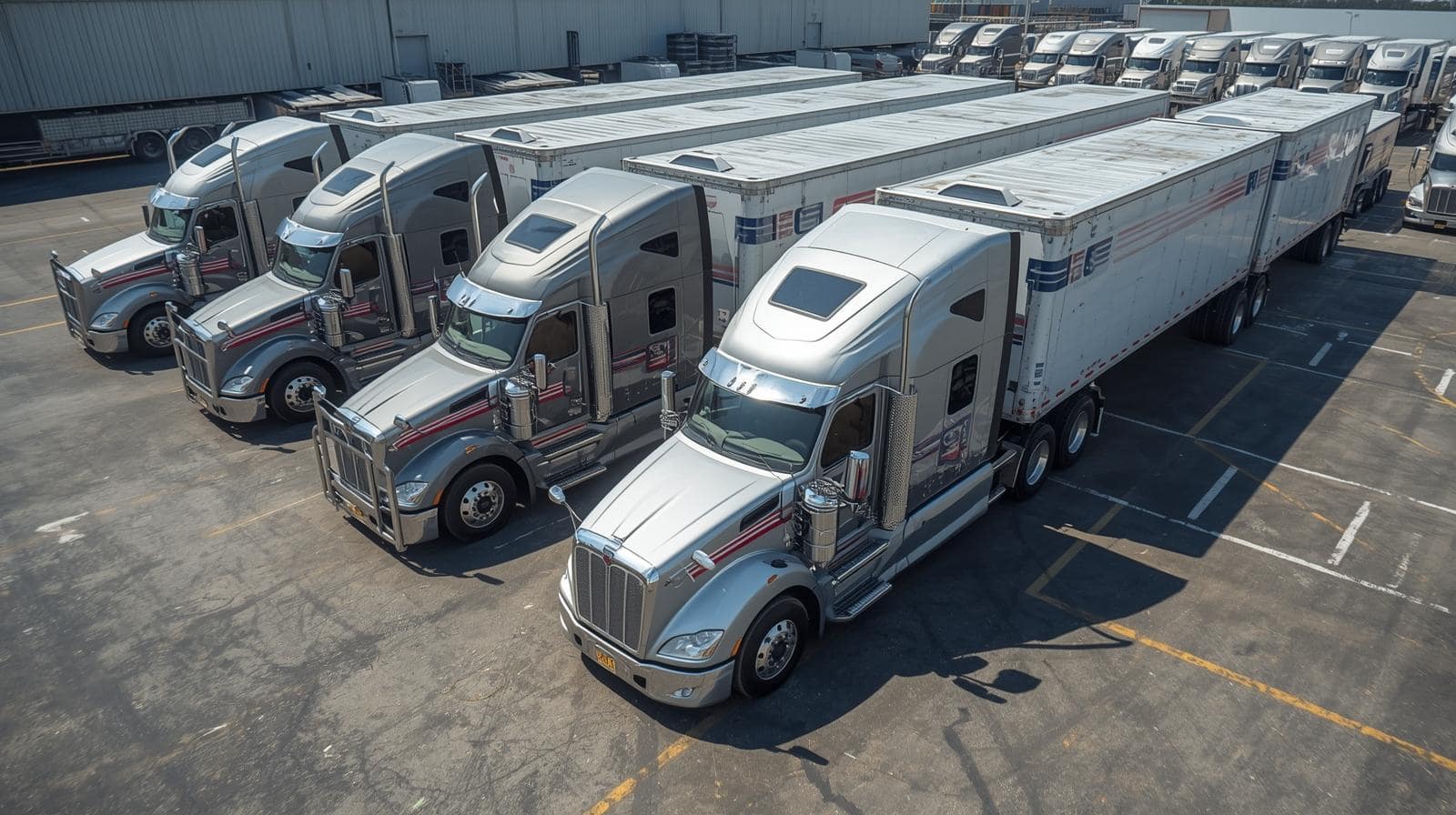Table of Contents
- Understanding the CCMTA and the ELD Mandate
- Who Must Comply with the Canadian ELD Mandate?
- ELD Requirements for Canadian Trucking
- Key Compliance Responsibilities for Fleet Owners
- Benefits of ELD Compliance
- Challenges of Adopting ELDs in Canada
- Choosing the Right ELD for Canadian Fleets
- Preparing for Full Compliance
- FAQ
The Canadian trucking industry has undergone a major shift with the introduction of Electronic Logging Devices (ELDs). These devices deliver greater accuracy, enhanced safety, and better compliance, but they also require adherence to strict rules set by the Canadian Council of Motor Transport Administrators (CCMTA).
For fleet owners and drivers, understanding these requirements is essential – not only to remain compliant but also to avoid fines, reduce administrative work, and improve operational efficiency.
Understanding the CCMTA and the ELD Mandate
What Is the CCMTA?
The Canadian Council of Motor Transport Administrators (CCMTA) develops national standards for commercial vehicle safety and compliance. In collaboration with Transport Canada, it established the Canadian ELD mandate to ensure consistent application across all provinces and territories.
Why Canada Introduced the ELD Mandate
The ELD mandate was designed to:
- Enhance road safety by reducing driver fatigue.
- Promote fair competition by standardizing Hours of Service (HOS) tracking.
- Simplify compliance for both carriers and drivers.
Manual logbooks were often inaccurate, inconsistent, and vulnerable to falsification. ELDs solve these issues with tamper‑resistant, automatically recorded data.
Who Must Comply with the Canadian ELD Mandate?
Applicability for Canadian Carriers
All federally regulated motor carriers and drivers operating commercial vehicles in Canada who must maintain HOS logs are required to comply.
Cross‑Border Carriers
Fleets operating between Canada and the United States must use ELD systems certified under both U.S. FMCSA and Transport Canada standards, ensuring uninterrupted compliance on both sides of the border.
Exemptions and Special Cases
Some carriers and drivers are exempt, including:
- Short‑haul drivers operating within a 160‑km radius.
- Vehicles manufactured before 2000, due to ELD incompatibility.
- Driveaway‑towaway operations where the vehicle itself is the commodity being transported.
ELD Requirements for Canadian Trucking
Mandatory Features of Canadian‑Approved ELDs
To comply, ELDs must:
- Automatically record driving time when the vehicle is in motion.
- Be tamper‑resistant to prevent falsification.
- Provide real‑time location tracking and vehicle movement data.
- Support data transfer for roadside inspections.
Certification Process
Unlike the U.S., where devices are self‑certified, Canadian ELDs require third‑party certification by an accredited body. Only devices listed on the Transport Canada registry are permitted for use.
Differences Between U.S. and Canadian ELD Standards
Key distinctions include:
- Third‑party certification instead of self‑certification.
- Stricter HOS rules, with no split sleeper berth provisions like those in the U.S.
- Bilingual requirements for device displays and instructions.
Key Compliance Responsibilities for Fleet Owners
Recordkeeping Obligations
Fleets must store ELD data for at least six months, ensuring it is readily accessible for inspections or audits.
Training Drivers and Staff
Drivers must be trained to:
- Operate ELDs effectively.
- Manage device malfunctions.
- Transfer logs to inspectors during roadside checks.
Policies for Handling Malfunctions
In case of failure, drivers must:
- Switch to paper logs immediately.
- Report the malfunction.
- Have the device repaired or replaced within 14 days (or sooner if required).
Benefits of ELD Compliance
- Improved road safety: Fatigue‑related incidents are reduced with accurate HOS tracking.
- Streamlined operations: ELDs cut paperwork, improve dispatching, and support better route planning.
- Simplified inspections: Digital logs make roadside checks faster and less stressful.
Challenges of Adopting ELDs in Canada
- Cost considerations: Hardware and subscription fees can be significant, but carriers often recover costs through efficiency gains and fewer violations.
- Resistance to change: Drivers may have privacy concerns or fear increased oversight. Proper training and clear communication help ease these concerns.
- Technical and connectivity issues: Rural and remote regions may present challenges. Choosing ELDs with offline functionality is essential.
Choosing the Right ELD for Canadian Fleets
- Approved devices: Only use Transport Canada‑certified ELDs. Verify their listing on the official registry.
- Integration: Select systems compatible with your dispatch and back‑office software for smoother workflows.
- Support and training: Choose vendors offering 24/7 support, training resources, and regular updates to remain compliant with evolving rules.
Preparing for Full Compliance
Step‑by‑Step Implementation Plan
1. Assess your fleet: Identify which vehicles and drivers need ELDs.
2. Select a certified ELD: Verify it is listed on Transport Canada’s registry.
3. Create a rollout schedule: Phase implementation to minimize disruptions.
4. Train drivers and staff: Ensure everyone understands how to use the system.
5. Monitor compliance: Conduct regular audits to address issues early.
Driver Engagement and Buy‑In
Communicate the benefits – less paperwork, faster inspections, and safer schedules – to build driver acceptance.
Continuous Compliance Monitoring
Schedule internal reviews to ensure logs, data transfers, and training remain up to date. The ELD mandate isn’t just about avoiding penalties; it helps fleets stay competitive, safe, and efficient.
FAQ
1. When did Canada’s ELD mandate take effect?
The mandate took effect on June 12, 2021, with full enforcement starting January 1, 2023.
2. Are Canadian and U.S. ELD requirements the same?
No. Canadian ELDs require third‑party certification and follow stricter HOS rules.
3. What exemptions exist under the Canadian ELD rules?
Short‑haul drivers, pre‑2000 vehicles, and driveaway‑towaway operations are exempt.
4. Can I use a U.S.‑approved ELD in Canada?
Only if it is also Transport Canada‑certified.
5. How long do fleets need to store ELD data in Canada?
Fleets must keep records for at least six months.










